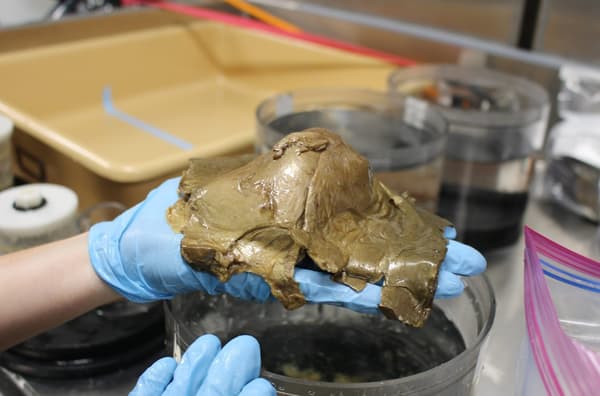An intriguing find. US Navy Administration scientists National Oceanic and Atmospheric Administration (NOAA) discovered an unidentified golden sphere during an underwater mission in the Gulf of Alaska, at the bottom of the Pacific Ocean, on August 30. It could be a marine animal egg.
Several hypotheses on the table
The specimen, which measures about 10 centimeters in diameter, was discovered attached to a rock at a depth of about 3,300 meters by the oceanographic vessel Okeanos Explorer during an underwater exploration mission led by NOAA.
The color of this dome, entirely gold, immediately intrigues researchers, who evoke several theories, according to NOAA. Among them, “a coral”, a “dead sponge envelope” or even an “egg” of a marine animal, the agency indicates in a statement published on Thursday.

The object of the strange discovery was sectioned by a marine robot and collected by researchers for analysis.
“Aren’t deep waters deliciously strange?” said Sam Candio, scientist and coordinator of the expedition that discovered the golden dome.
The object, yellowish brown in color once brought to the surface, was first subjected to an initial analysis, carried out on board the ship. “We are still not able to identify it beyond the fact that it is of biological origin,” Sam Candio said for the moment, referring to a texture similar to “skin tissue.”
At this time, researchers do not yet know if this dome belongs to an unknown species or if it may be part of a previously unidentified life stage.
“We probably won’t learn more until we can get it into the laboratory” where researchers will have “more sophisticated tools,” the engineer specifies. Analysis, particularly DNA analysis, is on the program.
A “disconcerting” discovery
For deep-sea biology professor Kerry Howell, the discovery of new species during missions of this type is not unusual. “The unusual thing is that we’re not even sure what it is. An egg, a sponge, what is it?” guardian.
Researcher Sam Candio wants to be a philosopher. “While it is somewhat disheartening to be baffled by this discovery, it reminds us how little we know about our own planet,” he said.
The discovery occurred during the Seascape Alaska 5 mission, whose objective was to map the seabed and, in particular, observe the habitat of corals and sponges located in the deep waters of the Gulf of Alaska. Started at the end of August, the operation must continue until September 16.
Source: BFM TV

